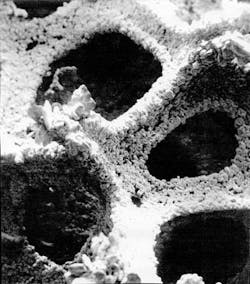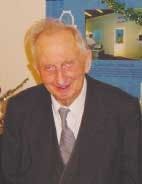Mirrors maintain shape under intense laser light
High-power lasers place stringent requirements on the fabrication, performance, and quality of optical elements with which they are used. Performance of high-power optics is generally governed by three mechanisms: the absorption of incident optical radiation, temperature rise controlled primarily by thermal properties, and the elements' thermo-optical and thermomechanical response—for example, distortion, stress birefringence, and fracture. All these mechanisms need to be understood to permit the design of efficient, compact, reliable, and useful laser systems, including those that are pulsed, continuous-wave, or operated in burst modes of varying duty cycles.
Sunlike power densities
For high beam powers, even a small amount of optical absorption is enough to cause an undesirable thermomechanical stress in a mirror, distorting the geometrical shape of the reflecting surface and in turn influencing the performance and optical characteristics of the laser system. Thermal deformations of mirrors can degrade the basic beam quality and in some cases can lead to the cessation of lasing. The response can be either transient or permanent—that is, catastrophic.
Cavity mirrors in high-power lasers are routinely exposed to power densities of many kilowatts per square centimeter. To put this into perspective, note that this power level is comparable to the power density that is radiated into space at the surface of the Sun. Thus, if a high-power laser mirror could be placed on the Sun for the period of time the laser operates, the shape of the mirror's surface should not change by more than, for example, a micron for proper operation.
We propose a useful definition of damage in which it is said to have occurred when the element or system no longer performs the function for which it was intended within specified limits (whether or not the damage is transient or permanent). The intensity of light at which distortions reach a preset level can serve as a defined upper limit of optical service ability. Exceeding this threshold can cause appreciable elastic deformation of an optical element, altering the intensity distribution of the laser output. If the intensity is further increased, deformation can become plastic (nonelastic) and thus result in permanent damage.
Metallic mirrors and cooling
For high-power laser applications, the traditional semireflecting glass cavity output mirror is often replaced by a metallic mirror, with radiation extracted by diffraction through an aperture in the mirror or at its boundary (for example, a hole coupler). Metals exhibit nearly perfect reflectivity in the infrared and also possess high thermal conductivity. However, pure metals have disadvantages such as a high coefficient of thermal expansion, as well as low hardness that makes them difficult to polish. Recent advances, however, allow for excellent finishing of ceramic mirror substrates such as silicon carbide (SiC). In addition, advances in single-point diamond turning and optical polishing of metals greatly alleviate fabrication limitations.
null
In cooling an optical element with a circulating liquid (usually water), the heat withdrawn is directly proportional to the difference of temperature between the mirror and the fluid. While convective heat exchange is greater at high temperatures, temperatures close to ambient are desirable for acceptable mirror performance. In one experimental cooling approach, channels were milled in the back of a metal substrate through which water was circulated. Although the channels were placed as close to the surface as possible, these substrates frequently suffered from vibration and deformation due to water movement. This approach led to an improvement in which porous capillary substrates—which when sectioned appear like foam rubber—carry the coolant (see Fig. 1). In this case, the heat exchange is greater because of a large surface area and increased mixing of the coolant chaotically flowing through the pores. Moreover, the fine matrix skeleton of the porous body provides good support for the mirror, maintaining its geometry.
A high-reflectance coating on the highly porous heat exchanger substrate further reduces the thermal load on the cooled substrate. The coating can be polished if necessary to achieve the desired reflectivity and figure. The thickness of such coatings should be very small—between 100 and 150 µm—to avoid reducing the heat absorbed by the mirror surface.
There are several ways to apply quality multilayers on highly porous cooled metal substrates. One approach involves intermetallics, or chemical compounds of metals. These intermetallic coatings can be fabricated, for example, by precipitation from a gas phase via chemical vapor deposition. With intermetallics it is possible to realize precision separation layers and to achieve very high optical quality. The microscopic "orange peel" appearance of ordinary metal surfaces can require additional finishing measures; for example, before final polishing a metal substrate can be alloyed to make it harder and more fine-grained. Even so, the final scale of unevenness may remain too large—from 0.01 to 0.1 µm. The structure of most intermetallic coatings initially is very fine—about 0.1 µm—and after treatment by a diamond tool or by optical polishing can result in almost perfect mirror surfaces with an average scale size of only a few nanometers. Industrial lasers with these mirrors, cooling systems, and coatings have been successfully used for welding, cutting, and hardening of metals.
Further improvements to high-power optics can be made. By changing the pressure of the coolant, it is possible to force it to boil at room temperature. When it boils, part of the absorbed heat is used for steam formation, raising heat removal efficiency to a level tens to hundreds of times higher than for convective heat transfer. In another approach, the water coolant is replaced by a liquid metal—for example, alloys of sodium, potassium, and cesium, which have low melting temperatures. The efficiency of the heat removal increases because not only is the heat carried away by the moving liquid, the coolant itself is a much better heat conductor. This method permits the removal of heat from reflecting surfaces at a few kilowatts per square centimeter on the surface.
Other technologies benefit
These cooling techniques can be applied to other technologies. Consider the integration of a large number of laser diodes into one- and two-dimensional array structures radiating high-power laser radiation either incoherently or coherently with respect to each other (see Fig. 2). One difficulty of such arrays is in maintaining the temperature of radiating heterojunctions within a narrow range to ensure frequency stability of the radiation. Such array structures consist of a large number of laser diodes soldered to the surface of a perfectly prepared metal mirror at a high packing density on the radiating elements. As the array radiates high-intensity laser light (even at today's demonstrated efficiencies of greater than 60%), heat exchangers should extract heat flows from the active medium of greater than 1000 W/cm2. At this level, the displacement of the radiation spectrum conditioned by a thermal increase of the radiating layer should not increase by more than 3 nm relative to the initial lasing wavelength, which corresponds to a change of temperature of the active layer of not more than 10°C. The heat exchanger for such a device should have a relatively low thermal resistance of not more than 0.1°C/W.
To obtain these high values of heat removal in devices, high-thermal-conductivity materials such as beryllium ceramics or diamond (with thermal conductivities of 3.7 and 20 W/cm°C respectively) can be used. Unfortunately, the effort and cost to produce and treat these materials makes the process of array fabrication more difficult and expensive. Silicon carbide is frequently used as a thermally conductive material that can be polished to high quality. Besides its high thermal conductivity (in the best case close to that of copper), SiC has high electrical impedance, is environmentally safe, and has a high hardness—important for optical polishing. Both separate and combined heat-removal elements can be made from SiC as well as complete microchanneled or porous heat exchangers. The coefficient of thermal expansion of SiC is close to that of gallium arsenide, which is the basis of many laser-diode compositions. This similarity helps prevent the material from cracking during heat cycling caused by soldering. Optical-grade SiC is available in sizes up to 1-m diameter.
Considerable effort has been focused on the development of efficient heat-sinking systems for one-dimensional and two-dimensional laser-diode arrays and improvement of the soldering technology for linear arrays. Research continues into phase-locked arrays of laser diodes, phase-locked systems with efficient injection of radiation into an optical fiber, new configurations for solid-state lasers such as disk and slab lasers, and efficient beam steering of high-power laser beams. The development of scalable phase-synchronized two-dimensional arrays of laser diodes emitting high levels of radiation has been made possible in part as a result of advances in the field of high-power optics.
VICTOR APOLLONOV is a professor and the late ALEKSANDER PROKHOROV was founder (see p. 102) of the General Physics Institute RAS, Vavilov Street, Moscow, 117942, Russia; ARTHUR GUENTHER is a professor at the Center for High Technology Materials, University of New Mexico, 1313 Goddard SE, Albuquerque, NM 87106; e-mail: [email protected].
Aleksander Prokhorov, laser pioneer
Aleksander Mikhailovich Prokhorov, coauthor of this article, died last year in Russia, where he had spent most of his life. He was born in 1916 in Atherton, Australia, and his pursuit of science, which covered a span of more than half a century, was devoted to the creation and development of quantum electronics and its various scientific and practical applications. His interest in this field was stimulated by his research work in the fields of radiospectroscopy of gases and electron paramagnetic resonance spectroscopy of solids.
Together with Nikolai Basov, Prokhorov developed the basic idea behind lasers and masers—the principle of generation and amplification of electromagnetic radiation by using stimulated emission during quantum transitions in atomic and molecular systems. The two scientists proposed the most efficient method of electromagnetic pumping for creating quantum states with inverse population. In 1964, along with Basov and Charles Townes, Aleksander Prokhorov was awarded the Nobel Prize in Physics. Prokhorov proposed and theoretically substantiated a new type of resonator, called the open resonator, which subsequently received experimental verification. He also proposed and studied many efficient active media for quantum amplifiers and generators and suggested new methods of their realization.
Under the guidance and active participation of Prokhorov, a strong experimental and industrial foundation was laid for the growth of many different types of high-quality optical single crystals for solid state lasers in the infrared, visible, and ultraviolet ranges, including active laser crystals, nonlinear elements for frequency conversion of radiation, and crystals such as modulators used for control of space-time parameters. Many new types of laser materials were developed, and Russia was widely considered a pioneer in the production of such materials.
Prokhorov also proposed and realized a new method for producing population inversion of molecules in gases—the so-called adiabatic expansion of a gaseous mixture. High-power gas-dynamic infrared lasers were designed using this method.
Victor Apollonov


